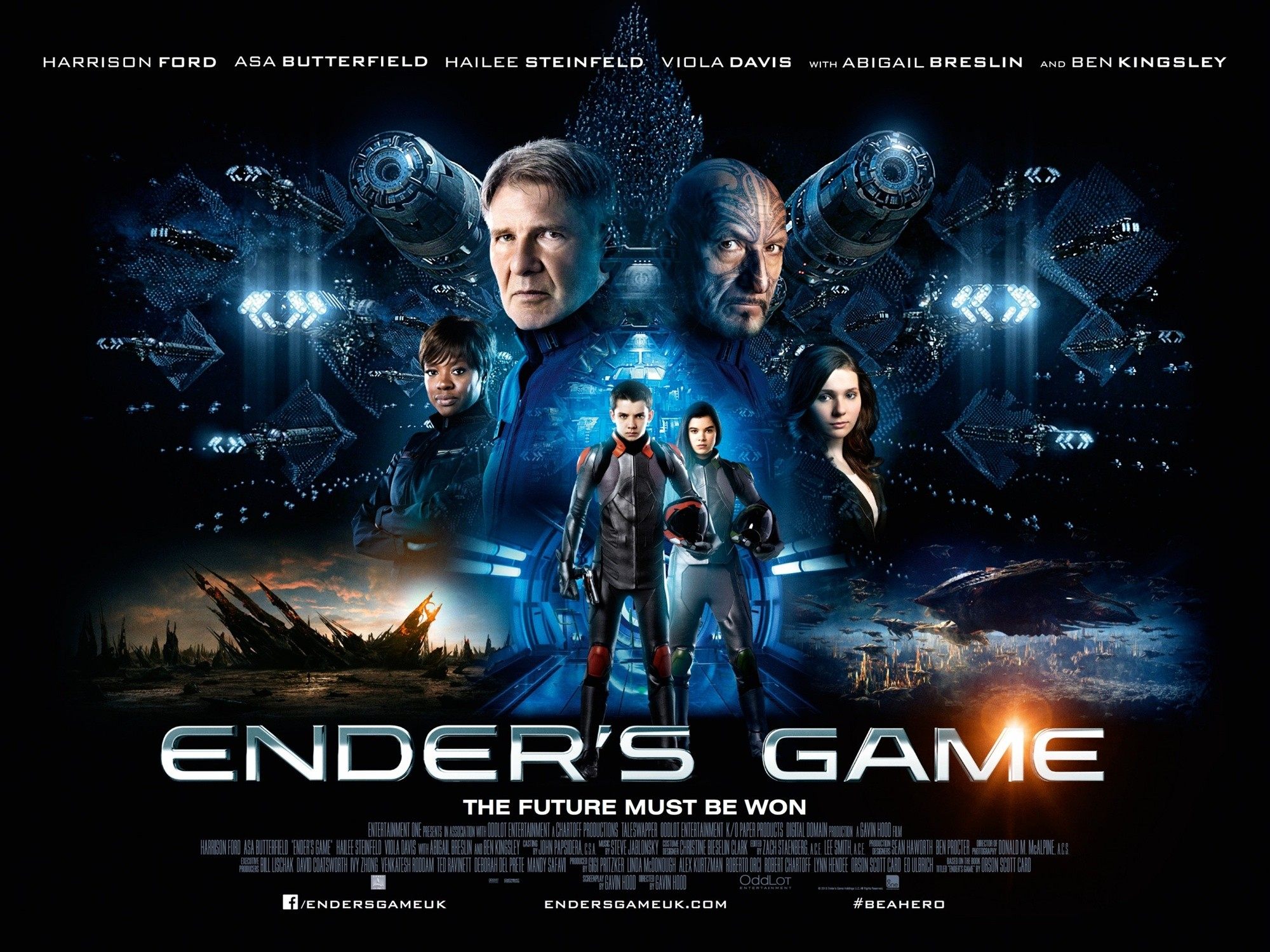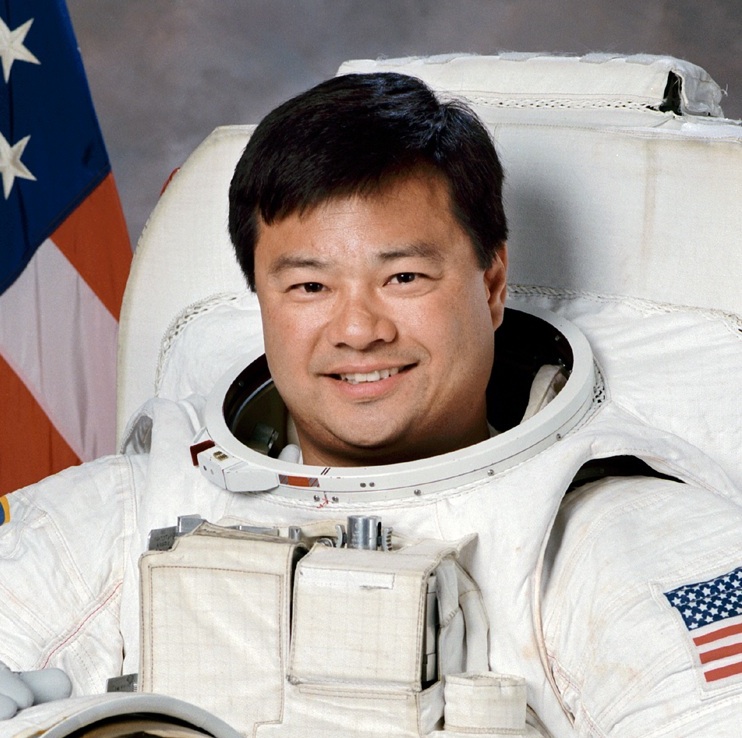
The AstroCritic: 'Ender's Game' (Op-Ed)

Leroy Chiao, AstroCritic, is a former NASA astronaut and commander of the International Space Station. During his 15-year flying career, he performed six spacewalks. Chiao is the special adviser for human spaceflight to the Space Foundation, and holds appointments at Baylor College of Medicine and Rice University. Chiao contributed this Op-Ed to SPACE.com's Expert Voices: Op-Ed and Insights.
I read the Orson Scott Card novel "Ender's Game" some years ago, on the recommendation of a friend. I remember it as an unusual book, even for science fiction — and while I enjoyed the story, it left me somewhat disturbed; the use of children in warfare never leaves a warm fuzzy.
The film is, to a large degree, faithful to the novel. Asa Butterfield as Ender Wiggin is exactly as I imagined him in the book. So is Abigail Breslin as Valentine Wiggin. The special effects are spectacular, depicting events and battles very much as I imagined them while reading the story.
In the book, Card brings the concept of child soldiers to the future, but with a twist. Instead of AK-47-toting kids fighting for the survival and personal gain of a ruthless despot, the book's child soldiers are being trained to fight for the survival of the planet — trained not for their numbers, but for their intellect and abilities. This is a science-fiction story because it takes place in the future, and much of the depicted technology is close, but not quite yet invented. For these reasons, the story resonates. [Science Fiction in Space: 6 Movies to Watch in 2013]
Card's technical prognostications were prescient, and Gavin Hood, director of the film, brings them to life. Here are some of the highlights:
Tablet Computers: Look a lot like the ones today, but the future versions can interact with your thoughts.
Remote-Controlled UAVs: Also a reality today, but the advanced space versions can be controlled together in large numbers and maneuver quickly, with lots of direction changes. These would need a lot of fuel, or an advanced (not yet invented) propulsion system.
Get the Space.com Newsletter
Breaking space news, the latest updates on rocket launches, skywatching events and more!
Robotic Surgery: Automated versions of what is in limited use today.

Graphical Combat Operations Room: A very cool mission operations theater. Graphics wrap around, and the commander interacts with thought, as well as voice, to teammates working at advanced "Minority Report"-style glass workstations.
"Freeze" Pistols: These are used for training in battle games. They cause temporary local paralysis. Not sure how they would work, but they are pretty cool. Better than phasers set to stun!
Spacecraft-Battleships: Very large structures that are capable of deep-space travel with large crews. It would seem that past interplanetary war and the threat of future war cleared the way for space funding.
Directed-Energy Weapon: This is the farthest out there. Both the United States and the Soviet Union experimented with particle-beam weapons in the 1980s. The one in the movie goes a few steps further. Seems that in the future, according to the story, society gets these technologies pretty much perfected as a weapon of mass destruction.
While the technology and special effects are cool, the story will make you think. The moral and ethical dilemmas are timeless (although some might say stereotypical). Does the end justify the means? Is the sacrifice of the one for the greater good of the many ethically correct? Do good men need to do wicked things, in order to protect the collective from evil, or at least perceived evil? "Ender's Game" is thrilling and entertaining. It also causes reflection on values and morals. It calls into question who and what are we as humans.
The AstroCritic says: Check it out.
AC Rating: 3.5/5.0 Stars
The views expressed are those of the author and do not necessarily reflect the views of the publisher. Follow us @Spacedotcom, Facebook and Google+. Original article on SPACE.com.
Join our Space Forums to keep talking space on the latest missions, night sky and more! And if you have a news tip, correction or comment, let us know at: community@space.com.
Leroy Chiao is a former NASA astronaut and International Space Station (ISS) commander. Chiao holds appointments at Rice University and the Baylor College of Medicine. Chiao has worked extensively in both government and commercial space programs, and has held leadership positions in commercial ventures and NASA. Chiao is a fellow of the Explorers Club, and a member of the International Academy of Astronautics and the Committee of 100. Chiao also serves in various capacities to further space education. In his 15 years with NASA, Chiao logged more than 229 days in space, more than 36 hours spent in Extra-Vehicular Activity (spacewalks). From June to September 2009, he served as a member of the White House appointed Review of U.S. Human Spaceflight Plans Committee, and currently serves on the NASA Advisory Council. Chiao studied chemical engineering at the University of California, Berkeley, earning a Bachelor of Science degree in 1983. He continued his studies at the University of California at Santa Barbara, earning his Master of Science and Doctor of Philosophy degrees in 1985 and 1987. Prior to joining NASA in 1990, he worked as a research engineer at Hexcel Corp. and then at the U.S. Department of Energy's Lawrence Livermore National Lab. Dr. Chiao left NASA in December, 2005 following a 15-year career with the agency. Chiao studied chemical engineering at the University of California, Berkeley, earning a Bachelor of Science degree in 1983. He continued his studies at the University of California at Santa Barbara, earning his Master of Science and Doctor of Philosophy degrees in 1985 and 1987. Prior to joining NASA in 1990, he worked as a research engineer at Hexcel Corp. and then at the U.S. Department of Energy's Lawrence Livermore National Lab.










